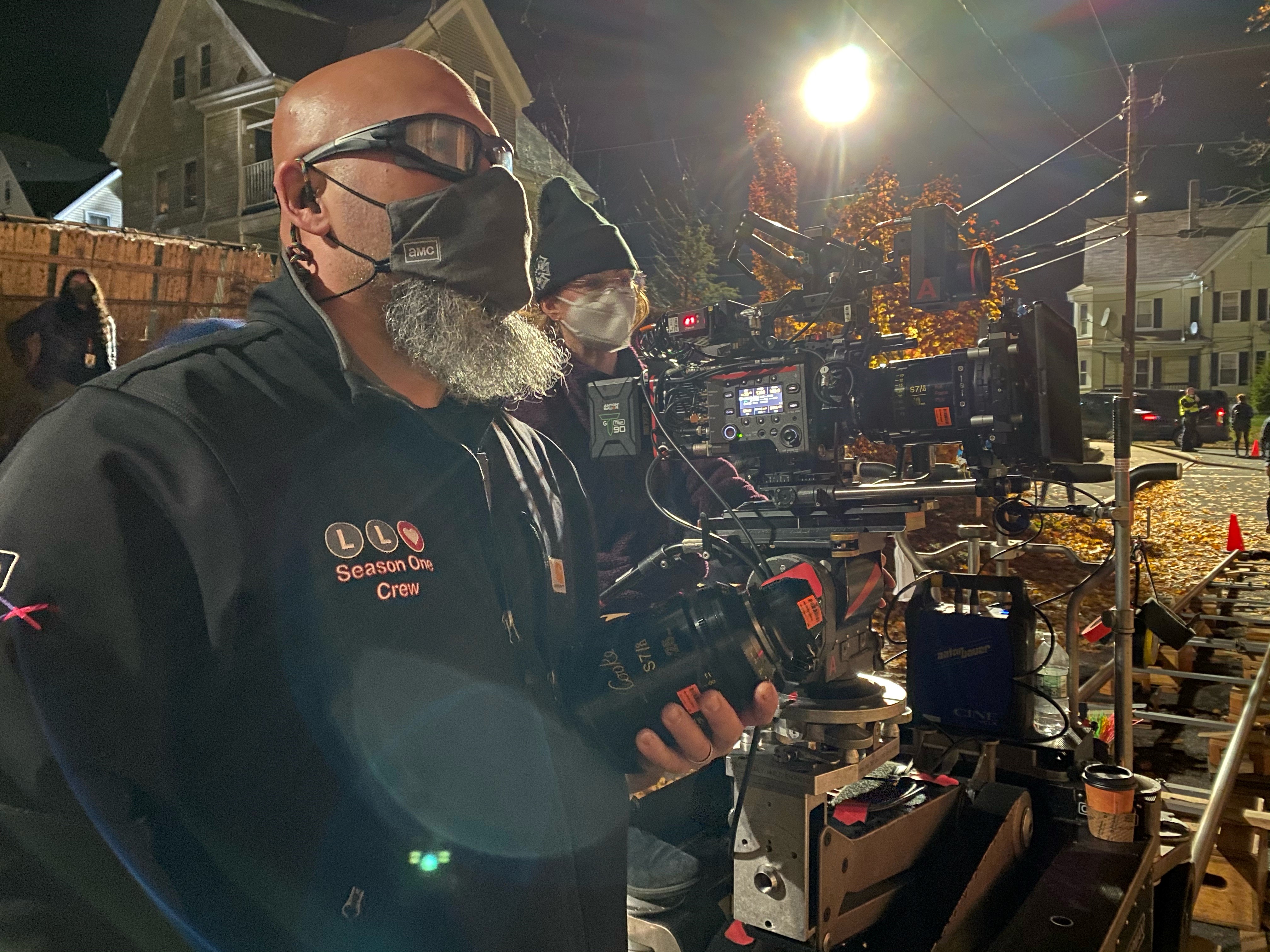Cooke Lenses Capture the Dual Worlds of `Kevin Can F**k Himself’
Cooke Optics’ prime lenses used to shoot this new AMC series about the secret life of a perfect sitcom wife

LEICESTER, U.K.—In capturing “Kevin Can F**k Himself,” which began airing this week on AMC, cinematographer Adrian Peng Correia relied on Cooke Optics S7/i Full Frame prime lenses.
The series is the story about a woman playing a perfect housewife in a sitcom that moves back and forth from her own point of view to the surreal world of the 4-camera sitcom world as she decides she is going to kill her husband.
“This story is from the perspective of the wife, Annie [Murphy’s] character, and how she sees the world,” said Correia. “She sees her world in two ways — and from a visual standpoint, they are very specific: her reality and in the world of a multicam sitcom.”
Season one’s 8-episodes feature cutaways from reality, but viewers never truly leave the multicam sitcom world, with cutaways that range from 40 to 60 percent of each episode. “With viewers jumping in and out of reality, we needed reality to have a very specific look, that’s why I went with the Cooke S7/i lenses,” said Correia. “It was an opportunity as a cinematographer to really take off and have a voice,”.
That voice started during pre-production, with Steven Porter, supervising colorist at MTI Film who worked with Correia to create LUTs for both worlds. Reality would be desaturated in the camera and further tweaked in post. The sitcom world would be bright and colorful, much as it is portraited in most sitcoms.
“I was brought in as a replacement DP, primarily due to Covid having shut everything down and the original DP no longer being available,” said Correia. “Some work had been done for the sitcom look pre-COVID, but we ended up redesigning most of the lighting layout. I really like to know as much as I can about the look before starting photography, because in our new world, you never know what can happen. That’s why having those LUTs was imperative. Plus, I had never done a multicam sitcom look before.”
The professional video industry's #1 source for news, trends and product and tech information. Sign up below.
To help get as knowledgeable as possible about lighting and shooting a sitcom, Correia reached out to friend and former `Will & Grace’ DP cinematographer Gary Baum, ASC and ‘Bob Hearts Abishola’ DP Patti Lee, ASC. “I got as many pointers and ideas as I could to arm myself,” said Correia.
For the single camera reality world, Correia came into the project with specific looks already determined during pre-production. “They wanted to do a more grounded, gritty look, but I was able to add my style of elevated naturalism, with more expressiveness in the lighting,” he explained. “The original plan for the single cam — actually two cameras for coverage — was to use the ARRI ALEXA Mini, but to use four Sony F55s for the sitcom. I wanted a similar imager to the sitcom cameras, so we went with Sony Venice cameras, with everything shot in 16x9.”
When it came to the lenses for the reality world, Correia knew exactly what he wanted and why. “I needed dimensionality to offset the photographically flat multicam sitcom world, especially for faces,” he said. “I absolutely love how the S7/i lenses render faces, especially having used them on “The Flight Attendant.” Those full frame lenses make performances pop, regardless of the performer. As an example, Kaley Cuoco’s character in “The Flight Attendant” has an outward and comedic personality, while Annie Murphy’s character here in “Kevin Can F**k Himself” goes on a psychologically fracturing journey that is more muted and insular, peppered with outbursts of absurdity and drama. The dimensionality of the S7/i lens peers into those nuances in her face.”
Correia’s Cooke S7/i kit consisted of the 18mm, 21mm, 25mm, 32mm, 40mm, 50mm, 65mm, 75mm, 100mm, and 135mm lenses.
While the 21mm became Correia’s go to lens for wides, his close-up work used mainly the 25mm, 32mm and 40mm. He also favored the 65mm for very dramatic moments.
“One of the nicest things about Cooke lenses is the information that you can get from them, both on-set and having it be recorded for VFX and CGI work,” said Correia, referring to Cooke’s /i Technology lens metadata. “Today, you want more from a lens and that’s where Cooke delivers. Just by looking at the monitors, I know where my stops are instead of having to radio my assistants. You have more control where everything lands and a more streamlined workflow. All data is useful, even just the option is powerful to me, even if I don’t use everything—I can do my job better. Knowing a 2.8 is a 2.8 and understanding what my lenses are doing is invaluable.”
Cameras and lenses were provided by rental company PRG Gear. Both the reality and multicam sitcom worlds were shot south of Boston at Stalwart Productions, in an unassuming warehouse-looking studio in Randolph, MA.
George Winslow is the senior content producer for TV Tech. He has written about the television, media and technology industries for nearly 30 years for such publications as Broadcasting & Cable, Multichannel News and TV Tech. Over the years, he has edited a number of magazines, including Multichannel News International and World Screen, and moderated panels at such major industry events as NAB and MIP TV. He has published two books and dozens of encyclopedia articles on such subjects as the media, New York City history and economics.

